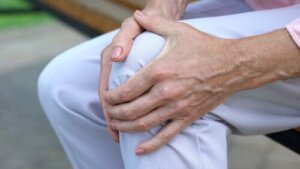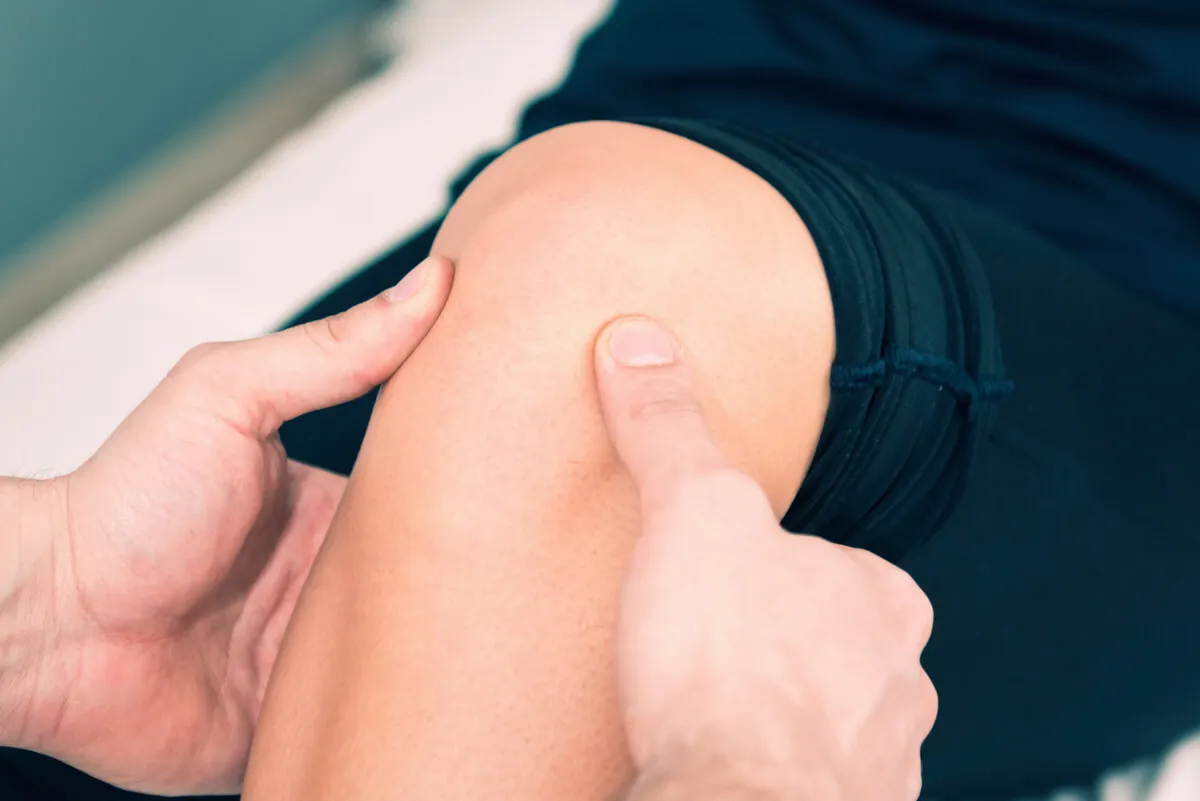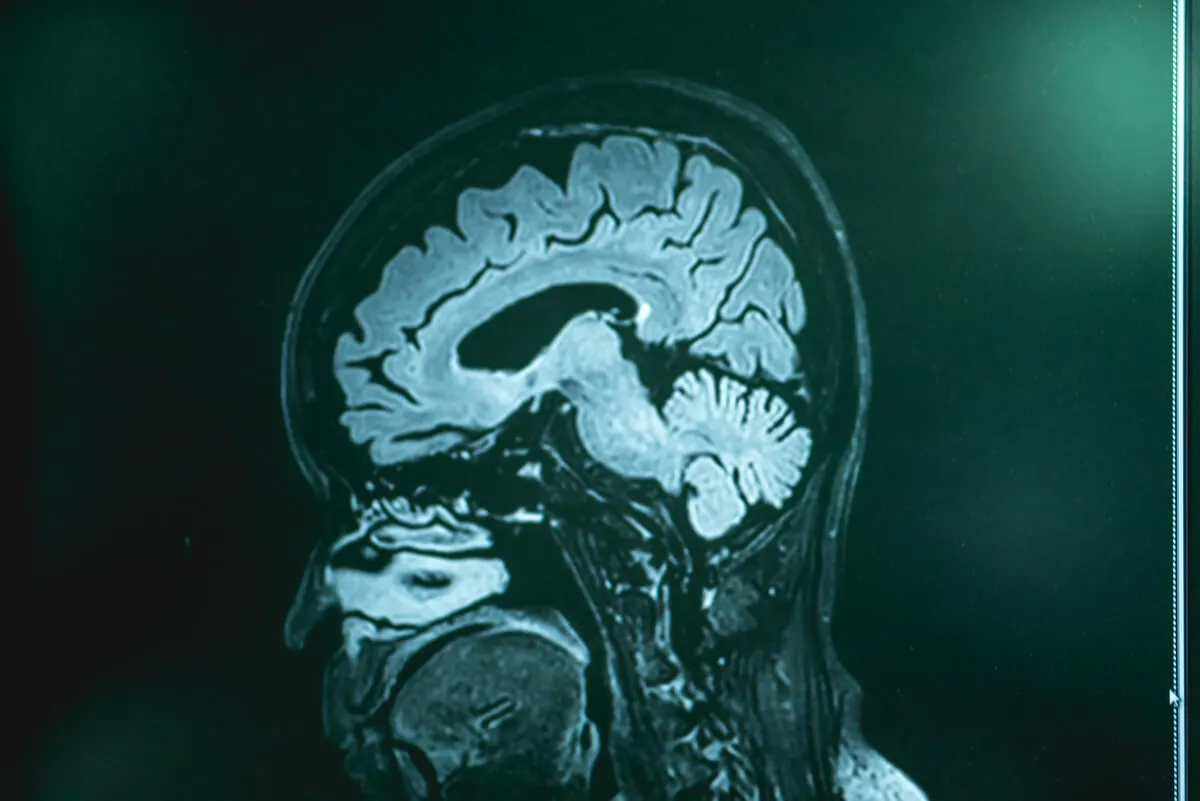What is Clonus and What Causes It?


Written and verified by the doctor Leonardo Biolatto
The term clonus is used in medicine to refer to a neurological condition characterized by involuntary muscle contractions. The word comes from the Greek, meaning ‘agitation.’
It occurs in the context of diseases affecting the pyramidal pathway. This is responsible for controlling body movement.
The problem is that these contractions can interfere with a person’s daily life. In addition, the sign appears in many serious diseases. Therefore, in this article, we’re going to explain everything you should know about it and why it occurs.
What is clonus?
As we mentioned in the introduction, clonus is a sign derived from a neurological disorder. As explained by the Clínica Universidad de Navarra, it’s defined as a series of fast alternating involuntary muscular contractions and relaxations. Clonus appears when there is an abrupt and passive extension of the tendons in a sustained manner.
It’s a deep reflex that usually appears in a specific muscle group. For example, it tends to occur in the ankle or knee joint. It occurs when a sudden and passive extension of the tendons in these areas is performed.
In some situations, clonus is a physiological reflex. According to a study published in the Encyclopedia of Neurological Sciences, it’s common in newborns.
However, in adults, clonus is almost always a health condition. In these cases, it may be a sign of a lesion in the pyramidal pathway. Such injury can occur at the cerebral level or in any of the fibers that descend to the muscles and tendons.
Types of clonus
Clonus most often affects the foot or patella. However, although rare, in some cases, it occurs in the hands or other parts of the body.
Clonus of the foot occurs when the person is made to flex their leg over the thigh. The doctor or researcher holds the foot from the sole, flexing it dorsally, and this symptom appears. According to a publication in Pathophysiologic Medical Semiology, it’s a series of jerks of the limb.
These jerks are maintained as long as the posture is held. However, it’s important to distinguish this from the phenomenon of neuromuscular hyperexcitability. In the latter case, the foot jerks cease in a shorter period of time.
On the other hand, patellar clonus appears when the patella is thrust downwards. To do this, the explorer has to push it down with the toes. As it is a more limited movement, it is more difficult to observe than in the foot.
Clonus of the hand is also difficult to observe. The explorer should place the patient’s hand in passive and forced extension and then apply a small blow to try to increase the extension.

What causes clonus?
Clonus occurs when there’s a lesion in the pyramidal pathway. This pathway is part of the corticospinal system. It’s responsible for transmitting nerve impulses related to movement.
What happens is that the central nervous system fails to inhibit the deep tendon reflex. Therefore, the excitability of this reflex arc is increased.
The exact pathophysiology is unknown. It’s believed that one of the mechanisms is the perpetual activation of muscle stretch circuits. That is, each muscle twitch causes the reflex to be activated again in a never-ending circle. It could also be that at the level of the central nervous system, a command is produced for those muscles to continue with the movement.
The idea that we must emphasize is that clonus is a manifestation of a lesion affecting the upper motor neuron. Physicians refer to this as a lesion of the first motor neuron. This is why it’s often accompanied by other signs of hyperreflexia (exaggerated reflexes).
We think you may be interested in reading this, too: Diego Carlos: His Musculature and a Serious Achilles Tendon Injury
Specific causes
Injury to the pyramidal pathway can occur as a result of many diseases and situations. Clonus is, therefore, a somewhat nonspecific sign.
One of the main causes of clonus is stroke. An area of the brain stops receiving oxygenated blood and its cells are damaged.
It can also be caused by trauma to the spinal cord. Infectious processes, such as meningitis and encephalitis, can give rise to this sign. Multiple sclerosis, an autoimmune disease, is also associated with the appearance of clonus.
It can even be caused by tumors and abscesses. It’s important to note that there are certain cases in which clonus appears in the context of intoxication. This may be due to drugs, such as tricyclic antidepressants or serotonin reuptake inhibitors.
How is it diagnosed?
The diagnosis of clonus is usually made by physical examination. The physician evaluates all reflexes and performs a complete examination.
In addition, the jerks that occur are usually counted. Once the presence of clonus has become evident, it’s essential to perform a complete analysis to find the cause. This usually requires a series of complementary medical tests.
One of the most commonly used is magnetic resonance imaging. This image allows detailed observation of the brain tissues. Blood and cerebrospinal fluid tests are also likely to be prescribed. To obtain the latter, a lumbar puncture should be performed.

Like this article? You may also like to read: Strengthen Your Neck Muscles with This Effective Exercise Routine
Treatments available for clonus
The treatment of clonus will depend on the cause. That is why it’s important to get a proper diagnosis.
However, a number of medications can be used to reduce symptoms. These are drugs that act as muscle relaxants and sedatives. For example, there’s diazepam or clonazepam, which are benzodiazepines. There’s also baclofen or thiazinidine.
All these compounds have side effects. They tend to cause confusion, tiredness, drowsiness, and dizziness. Some of them have a tendency to lead a person to addiction.
Therapeutic alternatives
One of the alternatives to treat clonus is botulinum toxin injections. The reason is that it helps the muscles to relax, preventing nerve impulses from being transmitted.
Botulinum toxin injections have a limited effect. After a period of time, its effects are mitigated. That’s why frequent applications are required, every several months.
Physiotherapy is considered another pillar of treatment. Rehabilitation techniques are used to stimulate muscle stretching. It also works on increasing the range of motion.
In some refractory cases, surgery may be used. The surgical procedure is based on sectioning the nerves that are causing the muscle twitching.
Clonus: A sign of something bigger and more serious
Clonus is a series of involuntary contractions of certain muscle groups. The most commonly affected are those of the ankle and knee. This sign is typical of neurological lesions affecting the pyramidal pathway.
Since it’s a non-specific condition, it’s essential for doctors to perform an exhaustive study to find the cause. There are certain treatments that help to alleviate the symptoms. However, the main key is to address the underlying disease.
All cited sources were thoroughly reviewed by our team to ensure their quality, reliability, currency, and validity. The bibliography of this article was considered reliable and of academic or scientific accuracy.
- LeWitt, P. A. (2014). Clonus. In Encyclopedia of the Neurological Sciences (pp. 806–806). Elsevier Inc. https://doi.org/10.1016/B978-0-12-385157-4.01136-2
- Thanikachalam, Vivekanand, et al. “Effect of botulinum toxin on clonus: a systematic review.” Archives of physical medicine and rehabilitation 98.2 (2017): 381-390.
- SEMIOLOGÍA MÉDICA FISIOPATOLÓGICA 2018. (n.d.). Retrieved May 27, 2021, from http://afam.org.ar/textos/10_04_18/clonus_definicion_y_tipos.pdf
- Clonus. Diccionario médico. Clínica Universidad de Navarra. (n.d.). Retrieved May 27, 2021, from https://www.cun.es/diccionario-medico/terminos/clonus
- Acuña, B. Juan Pablo. “Intoxicación grave por psicofármacos.” Revista Médica Clínica Las Condes 22.3 (2011): 332-339.
This text is provided for informational purposes only and does not replace consultation with a professional. If in doubt, consult your specialist.








